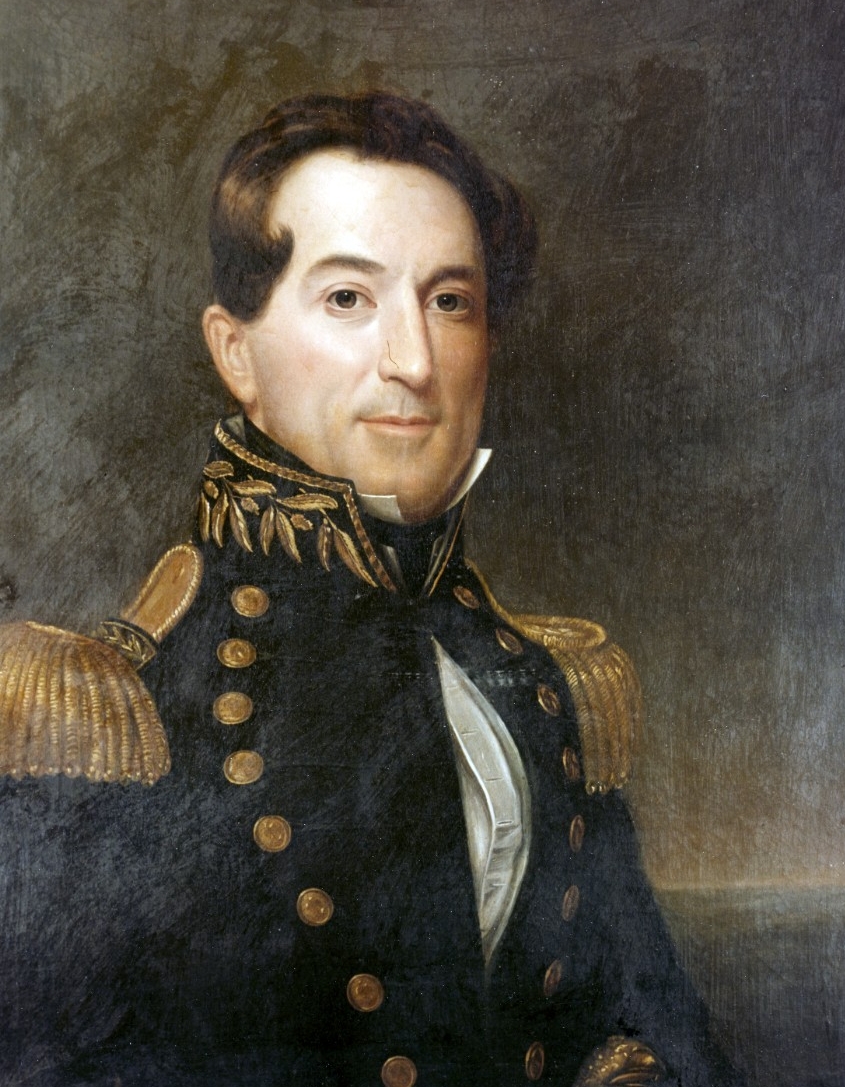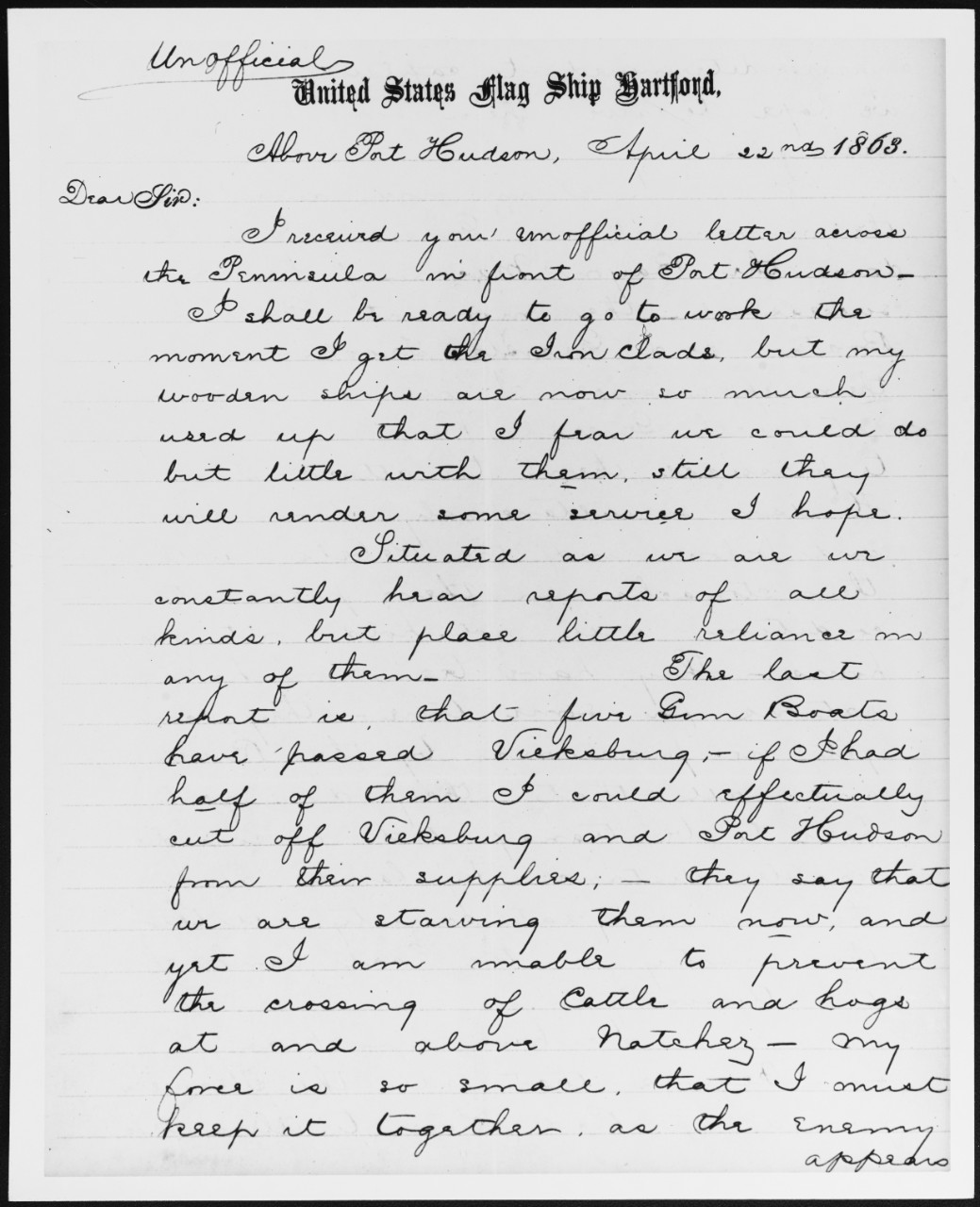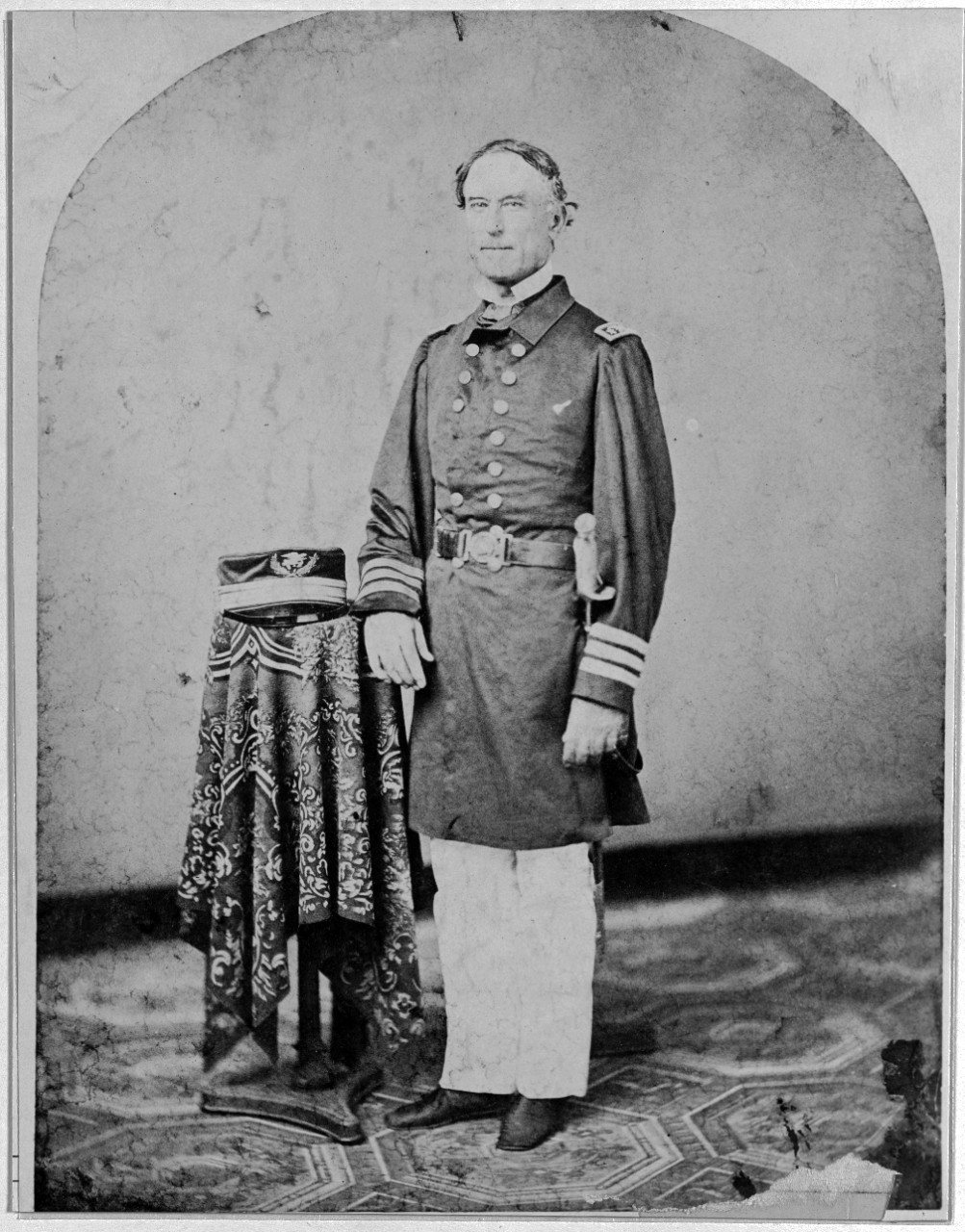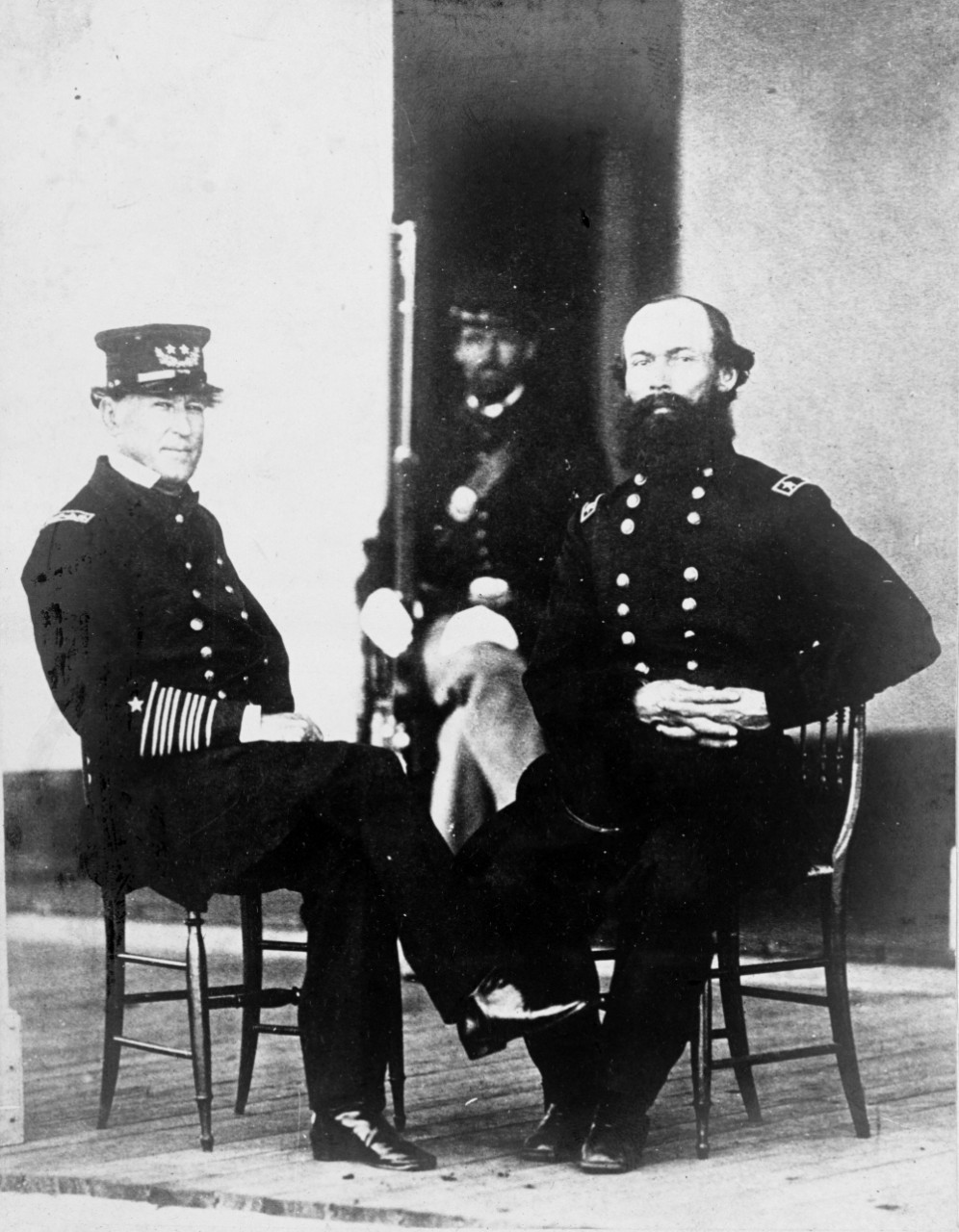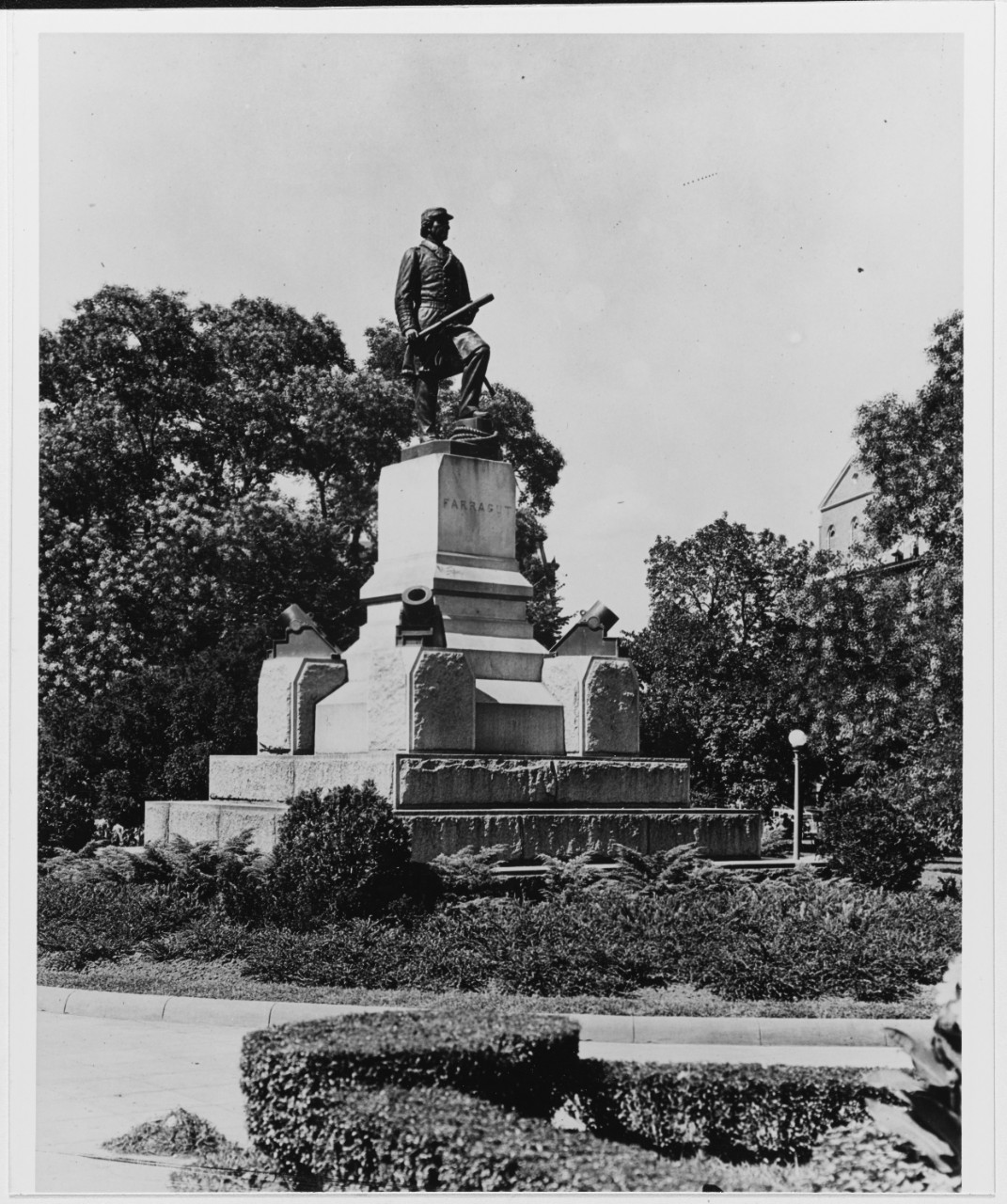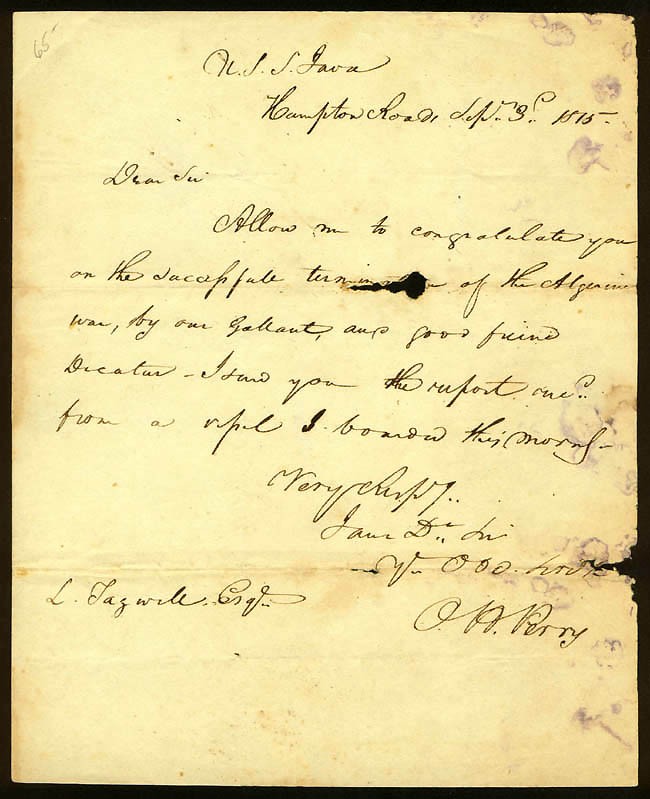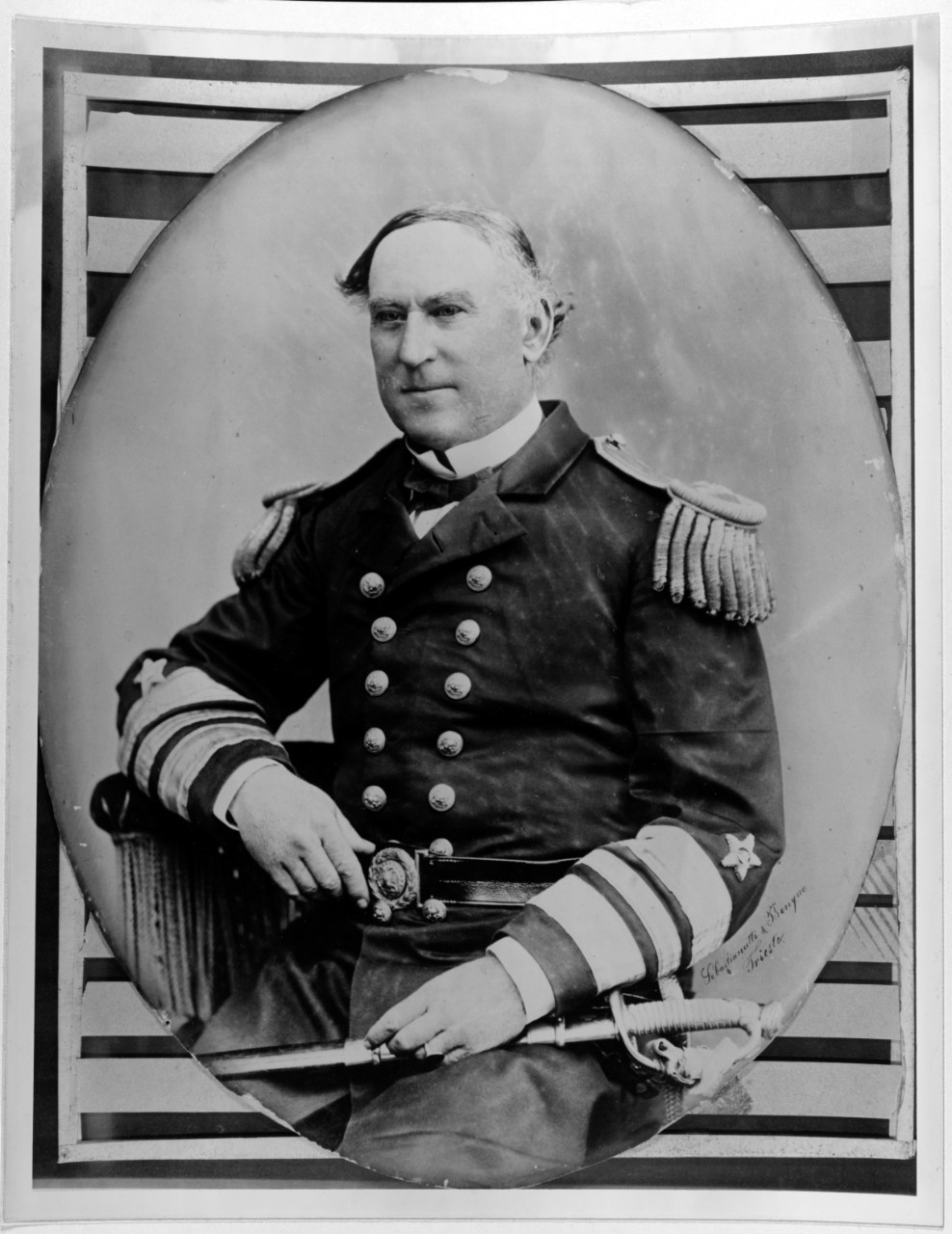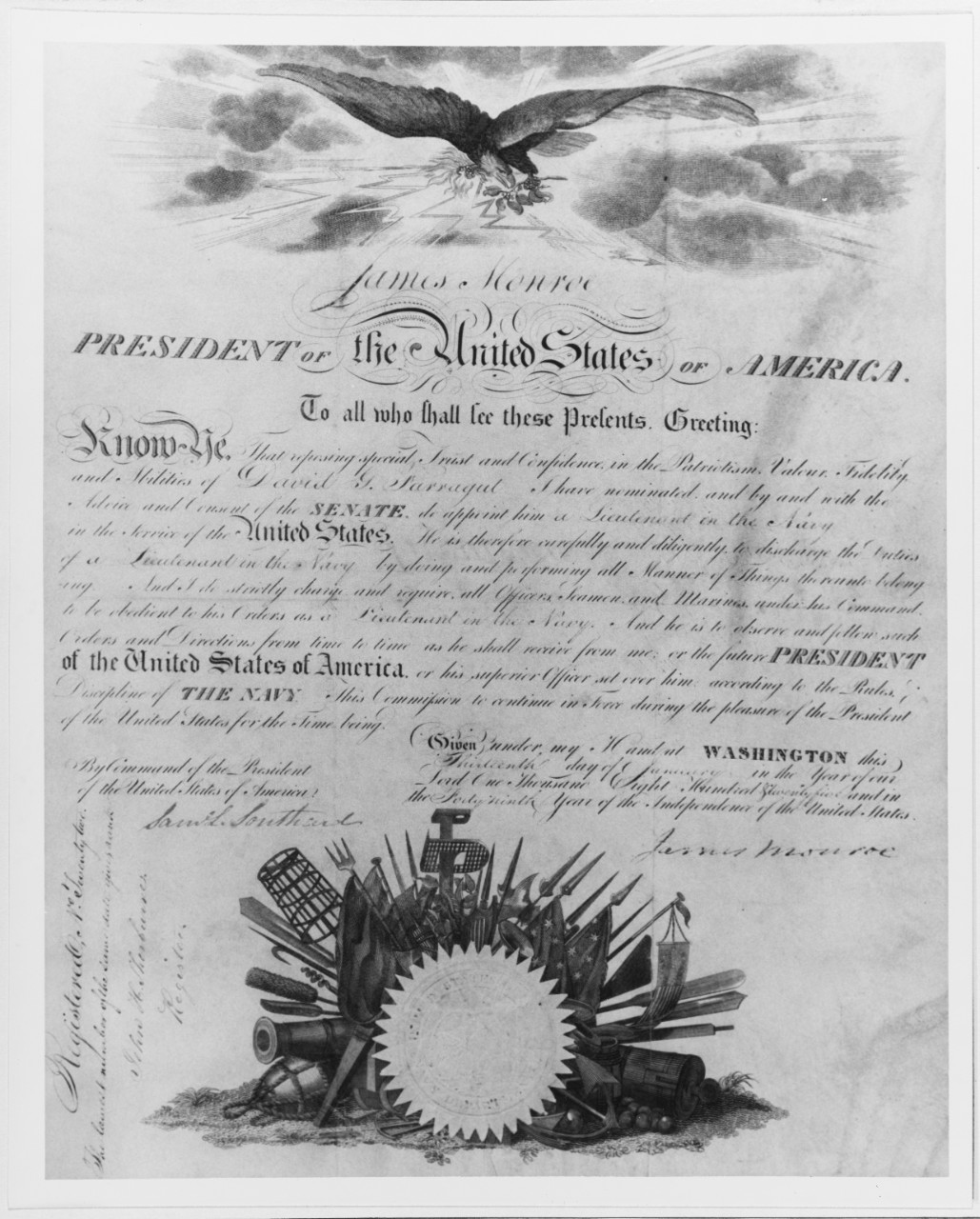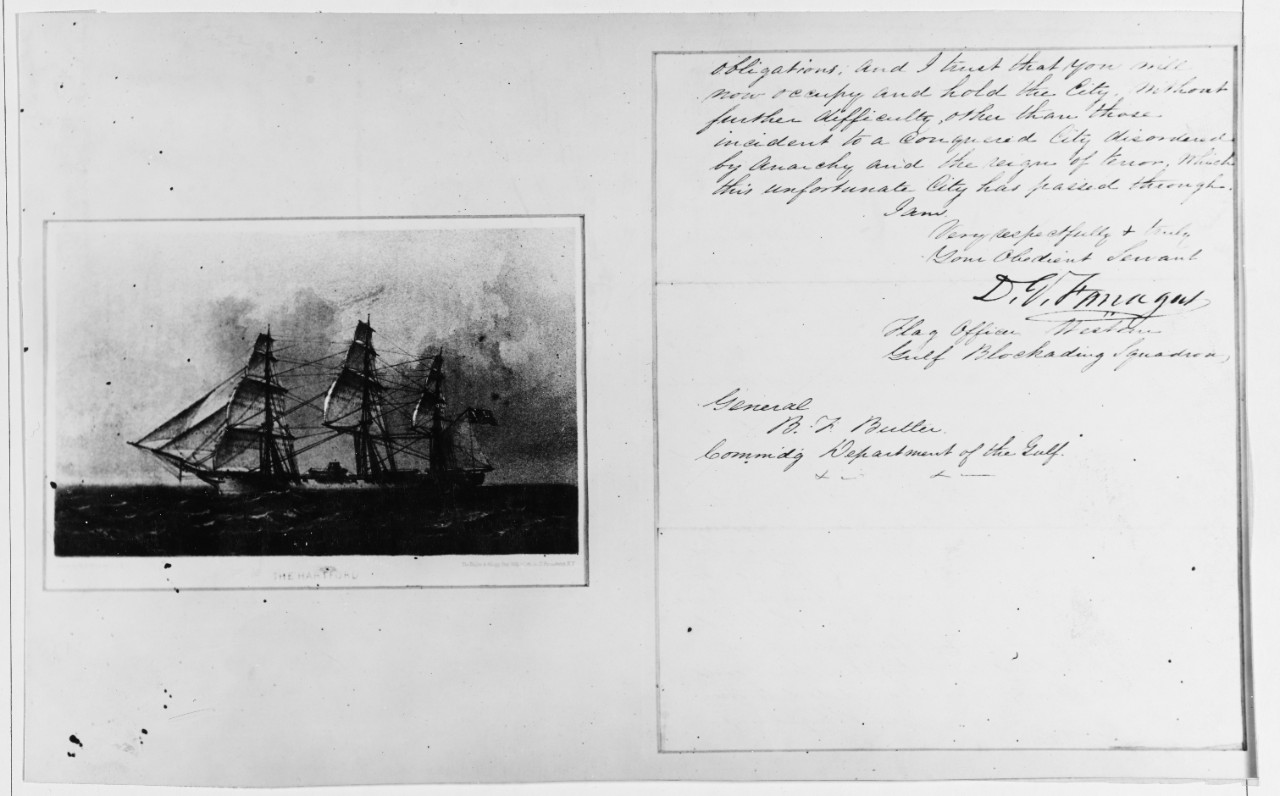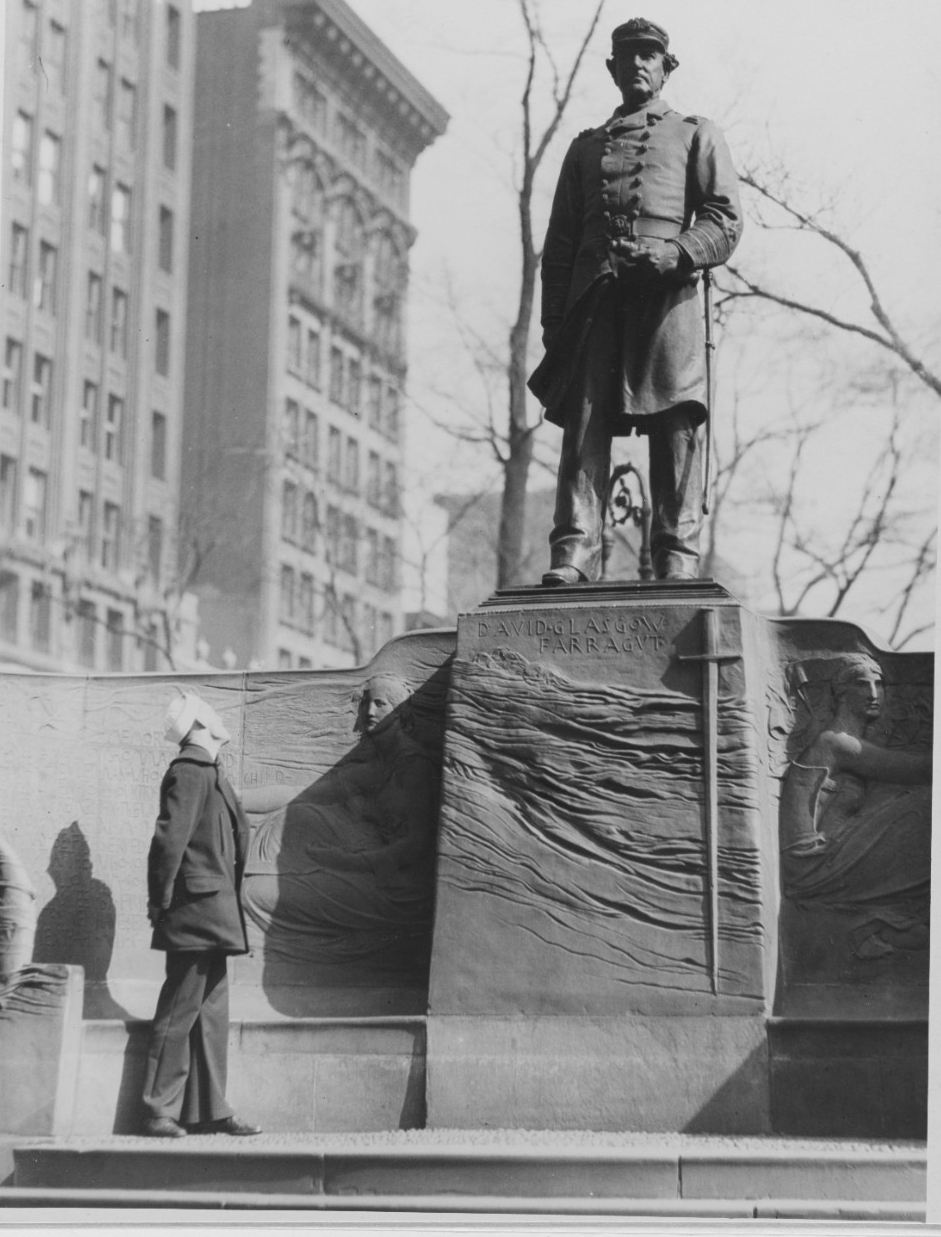David Glasgow Farragut
5 July 1801 – 14 August 1870
David Glasgow Farragut was born at Campbell's Station, near Knoxville, Tennessee, on 5 July 1801, and died at Portsmouth, New Hampshire, on 14 August 1870, after fifty-nine years of naval service.
Farragut was appointed midshipman on 17 December 1810 and saw his first sea service off the coast of the United States in the frigate Essex in 1811. In March 1814, he was ordered to Independence, to cruise in the Mediterranean, and remained with the Mediterranean Squadron until 1820, after which he served with the "Mosquito Fleet" in the West Indies until 1823.
Failing a preliminary examination for a lieutenancy in 1821, he tried again and passed, receiving the rank of lieutenant in August 1825. He attained the rank of commander on 7 September 1841; captain in 1855; and was commissioned rear admiral on 16 July 1862. The rank of vice admiral was created for him by President Abraham Lincoln on 31 December 1864, and on 25 July 1866, by congressional act, he was commissioned admiral, the first officer of the U.S. Navy to hold that rank.
Admiral Farragut's first command was the schooner Ferret in 1823-24, at the age of 22. In 1825 he was attached to Brandywine, assigned the duty of convoying the Marquis de Lafayette home to France after his visit to the United States. He served on the Brazil Station until late 1837, first as executive officer of Delaware, and later in command of Boxer and Decatur. While in command of the sloop Erie at Vera Cruz he witnessed the bombardment, by French naval forces, of the castle of San Juan de Uloa in 1838. At that time, he called special attention to the importance of horizontal shell fire.
In 1841 he was again ordered to Brazil Station, returning two years later. In April 1844 he was made executive officer of the Receiving Ship at Norfolk, Virginia, Pennsylvania, and remained at the Norfolk Navy Yard until after the Mexican War broke out in 1846. He was given command in March 1847 of Saratoga, and thereafter saw service on the blockade of Tuxpan.
He was sent to the Pacific coast to establish the navy yard at Mare Island, California, and served as its commandant from 1854 to 1859. The following year he commanded Brooklyn in the Gulf of Mexico. At the outbreak of the Civil War, he was called upon to choose between his native state and the federal government, and upon declaring his allegiance to the Union was given command of the Western Gulf Blockading Squadron in January 1862.
His most brilliant victory was the Battle of Mobile Bay, 5 August 1864, when he forced the passage of Forts Morgan and Gaines at the entrance to Mobile Bay and captured the Confederate ram Tennessee and the gunboat Selma, during which he uttered his famous words, "Damn the torpedoes, Full speed ahead!"
The torpedoes to which Farragut and his contemporaries referred would today be described as moored mines. [Hearn, Chester G. Admiral David Glasgow Farragut: The Civil War Years. (Annapolis, MD: Naval Institute Press, 1988): 263-265. According to the book by Admiral Farragut's son, The Life of David Glasgow Farragut, First Admiral of the United States Navy, (New York: D. Appleton and Company, 1879), pages 416−417, Admiral Farragut said "Damn the torpedoes! Four bells! Captain Drayton, go ahead! Jouett, full speed!"]
Admiral Farragut was married in 1823 to Miss Susan C. Merchant of Norfolk, Virginia, who died on 27 December 1840. His second wife was the former Miss Virginia Loyall, also of Norfolk, to whom he was married on 26 December 1843. Their son, Loyall Farragut, was graduated from the U.S. Military Academy, West Point, New York, and resigned in 1869.
In 1867, in command of the European Squadron, he made an extended good will tour in his flagship Franklin, and after his return to New York the next year his health failed. He performed his last official service, that of taking charge of the naval ceremonies in honor of Mr. George Peabody, whose body had been brought to the United States on the British ship Monarch. Farragut died the next year while on a visit to Portsmouth, New Hampshire.
Additional Resources
- David Glasgow Farragut biography
- Resolution Tendering the Thanks of Congress to Vice-Admiral David G. Farragut in Action in Mobile Bay on 8 August 1864: General Order No. 73, 17 February 1866
Ships named after David Glasgow Farragut
- Farragut (Torpedo Boat No. 11)
- Farragut (Destroyer No. 300)
- Farragut (DD-348)
- Farragut (DLG-6)
- Farragut (DDG-99)
Selected Imagery (click image to learn more or to download)

